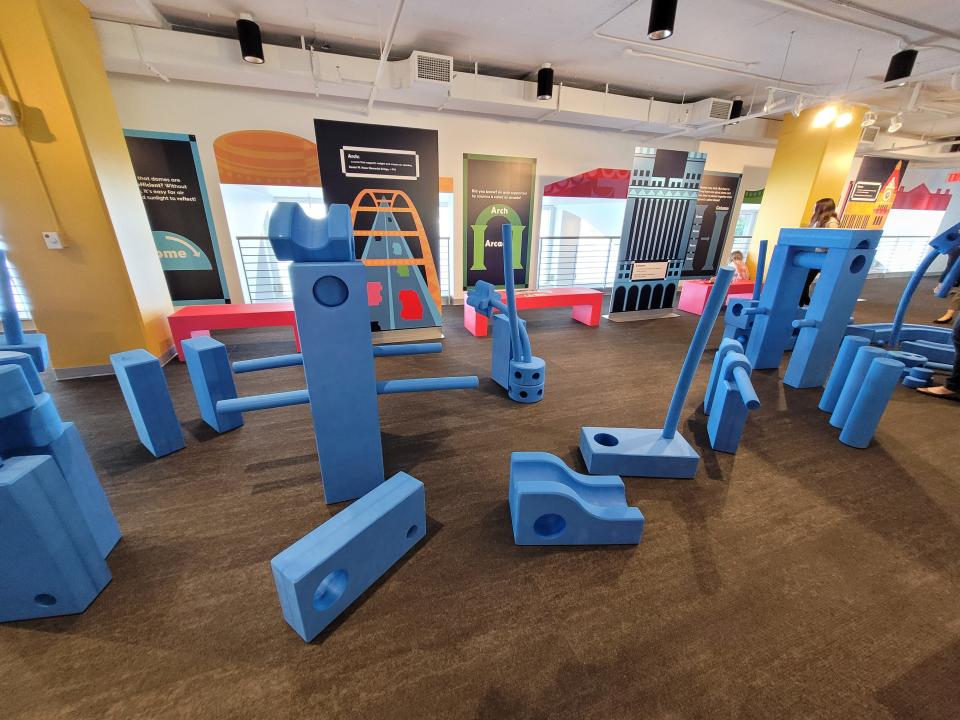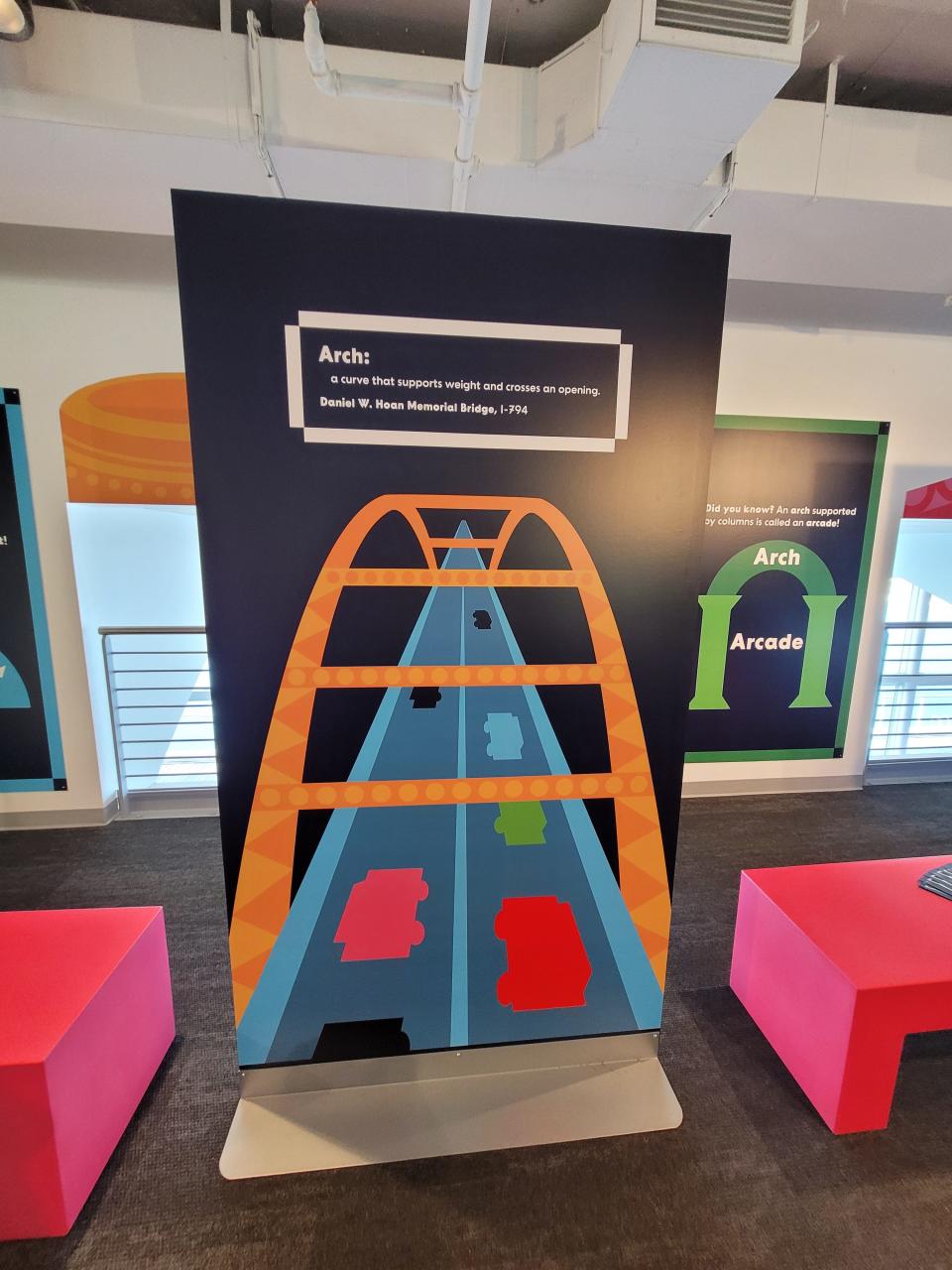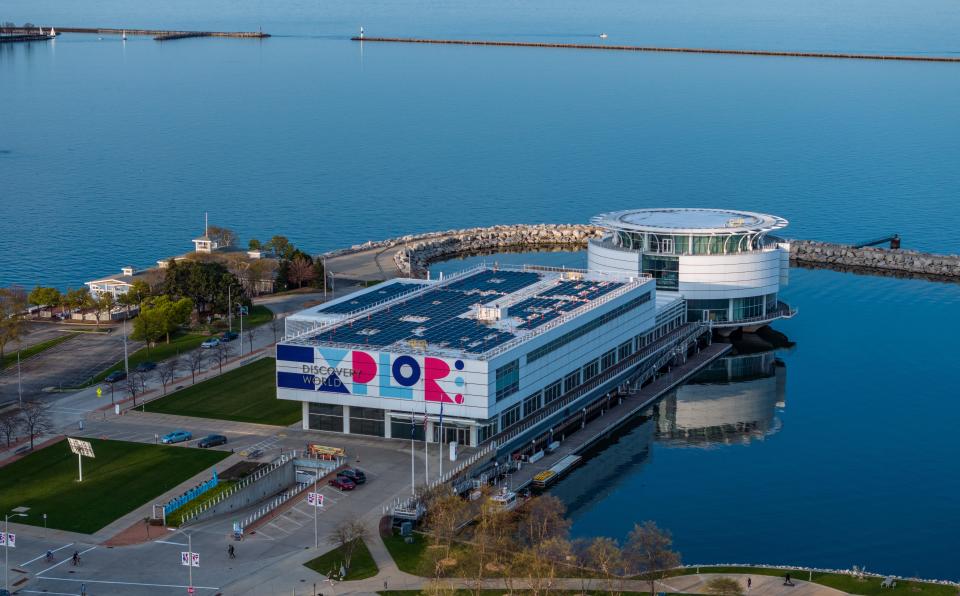Discovery World unveils two new exhibits and a renewable energy partnership

Discovery World has added two new exhibit experiences and a solar panel installation as part of a strategic planning process that will include the science museum changing exhibits more regularly and focusing its experiences on a wider audience that includes young children.
A new aquarium experience
The Reiman Aquarium, on the lower level of Discovery World, has added an exhibit called Me, Undersea. Visitors will learn about sea creatures that use adaptations like bioluminescence and camouflage. They'll also learn how remotely operated vehicles help scientists explore the ocean and look at plankton through microscopes.
The new experience inhabits three pods that used to be the museum's Underwater Labs exhibit. Discovery World president and CEO, Bryan Wunar, said the previous exhibit — which displayed equipment used by underwater scientists — didn't engage a wide audience.
Wunar said the aquarium updates are meant to transform the space into a "very active, immersive environment" that is accessible to the youngest Discovery World visitors, those of preschool age and younger.
In the first pod, visitors can look through a microscope to see different plankton specimen and press buttons to listen to different ocean sounds like humpback whales, bottlenose dolphins and boat motors. The second pod focuses on what underwater environments do to the human body; there, visitors can touch diving equipment and learn about how to breathe underwater. The third pod is meant to be a visual experience, with painted brightly colored sea creatures glowing against a black wall to teach visitors about bioluminescence.
"When we reopened during the pandemic, we started really observing who comes to Discovery World," said Wunar. "We're doing a lot for those 9-year-olds, those 12-year-olds, but their 5-year-old siblings are here, too.
"We don't want to move away from our core, older school-age audience, but if the younger kids are already coming, that's a good opportunity to encourage them to start thinking like scientists."
A new building block experience

A second new exhibit, located in the mezzanine area of the technology building, also gives younger children something to do.
The Block Party experience has large foam blocks in a variety of shapes that visitors can build with.
There are graphics of different Milwaukee buildings in the exhibit area to encourage builders to think about how different shapes are used to build large structures. Rather than photographs, the pictures are simpler illustrations that enable visitors to replicate the buildings in their own construction.
Signs around the exhibit also depict different building components and how they're used to support large buildings in Milwaukee. There's the Wisconsin Gas building tower, the columns of the Milwaukee County courthouse, arches at American Family Field and the Hoan Bridge, and the domes of the St. Josaphat Basilica, and, appropriately, the Domes.

"Younger children naturally learn about things like shapes and balance when they build with blocks, and this will expand on that to also have them learn about how engineers think about geometry and math and science when they build large buildings," said Wunar.
Discovery World will be open seven days a week
Discovery World is currently open Wednesdays through Sundays, but that will change starting June 5, when the science museum will be open seven days a week.
Wunar said the new hours will be in place all summer, and staff will gauge attendance levels when the school year starts to determine hours going forward. Wunar said attendance typically falls off a bit in September before school field trips start, and then more people attend in the winter months leading into the holiday season.
The decision to tie hours to attendance trends also came about as part of the museum's strategic planning process. Wunar said the unexpected shutdown during the pandemic gave staff the opportunity to think about how Discovery World serves the community, and when it reopened, they were able to observe how guests typically use the museum.
Solar panels and a solar tree

In addition to the new visitor experiences, Discovery World has partnered with We Energies to install more than 650 solar panels on its roof. Wunar said the energy captured by the solar panels — which will be directed back into the larger power grid — will be enough to offset the energy usage of roughly 100 single-family homes.
In the coming weeks, a second solar project will be installed in front of Discovery World — a sculpture in the shape of a tree.
"The solar tree is a way to add an aesthetic feature to the front of the building that also draws attention to the work that is being done and the importance of renewable energy," said Wunar.
He added that some of the messaging in the museum's Power On exhibit will be updated to emphasize the push toward renewable energy.
"We want to make sure we're emphasizing to our audience the underlying message that we all have a role to play in the sustainability of our future," said Wunar. "Whether that's conservation of our Great Lakes or renewable energy, everyone can actively participate in taking care of our natural resources."
If you go
Where: Discovery World, 500 N. Harbor Drive, Milwaukee
Hours: 9 a.m.-4 p.m. daily starting June 5
Admission: $22 for adults, $18 for children ages 3-17 and seniors 60 and older, free for children ages 2 and under, $16 for college students and members of the military (with ID)
This article originally appeared on Milwaukee Journal Sentinel: Discovery World adds two exhibits and solar panels